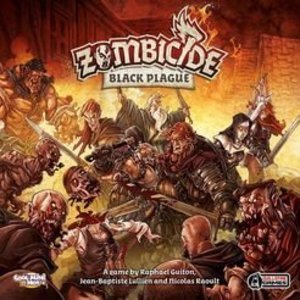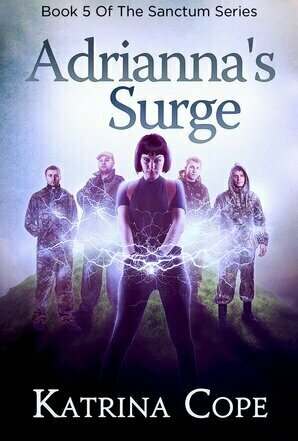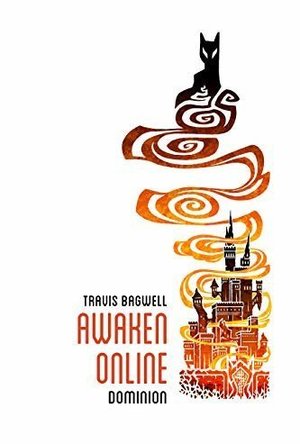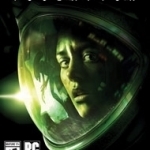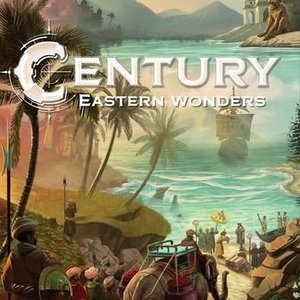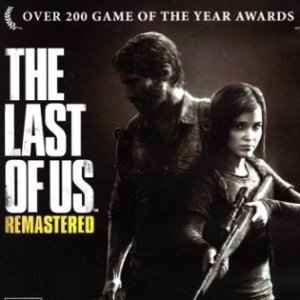Search
Search results
Jordan Binkerd (567 KP) rated Zombicide: Black Plague in Tabletop Games
Jul 21, 2019 (Updated Jul 21, 2019)
Improved ruleset vs. the original game (3 more)
Fantasy theme
Excellent miniatures!
Improved components vs. the original game
Primarily a combat simulator (1 more)
Low complexity
Improved rules and components, plus the fantasy theme? I wish I discovered this before the original.....
My wife and I love the original Zombicide and have most of the content for the modern setting, minus Kickstarter exclusives and the guest artist characters. So when we found ourselves at the local ComicCon and there was a copy of Black Plague in the game library? We jumped all over that! Compared to the original game, they've fixed several of the rules that bugged us about the game, especially regarding shooting and resources. They've also upgraded the dashboard system to a plastic thing with pegs, which is so much better than the originals that we've seriously considered buying them on eBay and Photoshoping cards for the modern characters so that we can incorporate the upgraded dashboards. We did incorporate a lot of the rules changes into our own games. So if you want to get into Zombicide and can only pick one setting, make it this one.
Like I said, we love Zombicide. But there are a lot of people in the gaming community that feel it lacks something in the way of complexity and strategy. They're not necessarily wrong. It's primarily a tactics game: here's your mission and goal, here's the situation, go! Is it easy? Sometimes. Depends on how lucky you are. Sometimes the zombies spawn in ways and locations that play right into your hands. Sometimes the Abomination spawns right in front of you and you either die immediately or the game bogs down while you scramble to outmaneuver him or find the (scarce) resources to defeat him. It can be pretty random and frustrating at times, and there are people who avoid randomness like the plague in their gaming. But like I said, my wife and I love the system, and this is the best version of it that I've seen.
Like I said, we love Zombicide. But there are a lot of people in the gaming community that feel it lacks something in the way of complexity and strategy. They're not necessarily wrong. It's primarily a tactics game: here's your mission and goal, here's the situation, go! Is it easy? Sometimes. Depends on how lucky you are. Sometimes the zombies spawn in ways and locations that play right into your hands. Sometimes the Abomination spawns right in front of you and you either die immediately or the game bogs down while you scramble to outmaneuver him or find the (scarce) resources to defeat him. It can be pretty random and frustrating at times, and there are people who avoid randomness like the plague in their gaming. But like I said, my wife and I love the system, and this is the best version of it that I've seen.
Phil Leader (619 KP) rated Adrianna's Surge in Books
Nov 8, 2019
Starting out as the story of Jayden, rescued from a life on the streets by a mysterious benefactor and enrolled into an advanced (and secretive) school, the Sanctum series has gone from strength to strength, and the fifth installment is no exception.
Following on directly from the end of the fourth book, Eric and the Black Axes, this follows the exploits of both The Sanctum and Ernest College as they try to stop the robot army. But Eric Showden is not the worse adversary they will face. Secrets will be revealed which will change things forever...
Once again this is a fantastic roller coaster ride of a book. By using the clever technique of having the children of both The Sanctum and Ernest College battling by means of controlling surrogate robots and computer hacking, infiltration and battles are fought at one remove. The fighting is also done without guns, but instead using martial arts skills. Combined with the high toughness and strength of the surrogates this allows for some thrilling fight scenes, often against seemingly insurmountable odds.
But there is a lot more to this book, with a lot of background of both Avando and Dr Ernest explored and explained. There are real shocks along the way with what happens and what is revealed, either through investigation or as a result of decisions made. The stakes are higher and everyone must dig deep to win through.
The ending is terrific and very dramatic and although it feels like it could be a permanent end, I really hope that there are more stories in the pipeline for Jayden and his friends. I would miss them a lot if this was all there was.
It's probably over-used but really this is a series that deserves to be filmed. Now we have seen the end of the Hunger Games and Harry Potter finished a while ago I can't think of a better concept to enthuse young adults (and a little younger).
Following on directly from the end of the fourth book, Eric and the Black Axes, this follows the exploits of both The Sanctum and Ernest College as they try to stop the robot army. But Eric Showden is not the worse adversary they will face. Secrets will be revealed which will change things forever...
Once again this is a fantastic roller coaster ride of a book. By using the clever technique of having the children of both The Sanctum and Ernest College battling by means of controlling surrogate robots and computer hacking, infiltration and battles are fought at one remove. The fighting is also done without guns, but instead using martial arts skills. Combined with the high toughness and strength of the surrogates this allows for some thrilling fight scenes, often against seemingly insurmountable odds.
But there is a lot more to this book, with a lot of background of both Avando and Dr Ernest explored and explained. There are real shocks along the way with what happens and what is revealed, either through investigation or as a result of decisions made. The stakes are higher and everyone must dig deep to win through.
The ending is terrific and very dramatic and although it feels like it could be a permanent end, I really hope that there are more stories in the pipeline for Jayden and his friends. I would miss them a lot if this was all there was.
It's probably over-used but really this is a series that deserves to be filmed. Now we have seen the end of the Hunger Games and Harry Potter finished a while ago I can't think of a better concept to enthuse young adults (and a little younger).
Ross (3284 KP) rated Awaken Online: Dominion in Books
Nov 29, 2019
Another excellent tale in the world of AO
This the 4th "full-length" (though the side quests aren't exactly novellas!) story in the LitRPG series starts of with Jason in his new incarnation as a "Keeper". He has a new set of tools, necromancy spells and abilities to get to grips with, and a new threat to overcome.
For once, the in-game story is split between characters, as we see Jason and Riley take on new training regimes (Jason has finally realised he can't always cower in the background letting his zombies and skeletons do all the work and he has to become better at combat himself), Frank goes on tour to secure the outlying towns of their growing empire, and the baddie Alex plots to get some revenge on Jason for publicly besting him. We also spend time in the real world as a senatorial hearing is opened to look into allegations that Awaken Online may not be safe for its users.
All of the characters develop notably in this book, none more than Jason who has to do some soul-searching, change his in-game role, and also make peace with what the game technology may be doing to his mind and body.
The story is strong, though with a smaller scale in its problem solving than before - the focus is more on Jason and Riley's personal challenges rather than larger quests. It is a little heavy on the admin at times but given how complicated games like this would be that adds to the immersive feel of the book.
The only main gripe for me is the use of the word "tendril" on almost every page, and the occasional use of "overtop" which very much jars when read.
Otherwise, another superb, gripping tome in this online fantasy world.
Next up is Frank's side-quest, hopefully before Christmas (I can't seem to keep up with Bagwell's output and am always at least 2 books behind!).
For once, the in-game story is split between characters, as we see Jason and Riley take on new training regimes (Jason has finally realised he can't always cower in the background letting his zombies and skeletons do all the work and he has to become better at combat himself), Frank goes on tour to secure the outlying towns of their growing empire, and the baddie Alex plots to get some revenge on Jason for publicly besting him. We also spend time in the real world as a senatorial hearing is opened to look into allegations that Awaken Online may not be safe for its users.
All of the characters develop notably in this book, none more than Jason who has to do some soul-searching, change his in-game role, and also make peace with what the game technology may be doing to his mind and body.
The story is strong, though with a smaller scale in its problem solving than before - the focus is more on Jason and Riley's personal challenges rather than larger quests. It is a little heavy on the admin at times but given how complicated games like this would be that adds to the immersive feel of the book.
The only main gripe for me is the use of the word "tendril" on almost every page, and the occasional use of "overtop" which very much jars when read.
Otherwise, another superb, gripping tome in this online fantasy world.
Next up is Frank's side-quest, hopefully before Christmas (I can't seem to keep up with Bagwell's output and am always at least 2 books behind!).
Matthew Krueger (10051 KP) rated the Xbox One version of Alien: Isolation in Video Games
Jan 22, 2020
Isolation Within Inside The Ship
Alien Isolation- is a phenomenal game, its terrorfying, horrorfying, scary, and overall fantastic survival game. Think Dead Space, Lost Planet and Prey combind into one epic game.
The game is set 15 years after the events of the original 1979 film Alien, and follows engineer Amanda Ripley, daughter of Alien protagonist Ellen Ripley, as she investigates the disappearance of her mother. Which is cool, because now you in the shoes of Ripley's daughter, trying to find her mom.
The Game requiries the player to avoid and outsmart a single Alien creature with tools such as a motion tracker and flamethrower.
The player can use the motion tracker to track the Alien's location. While motion was detected in front of the tracker, a circle will appear on its screen, indicating where the motion is detected. Which you will use often to track where the alien is.
The Alien creature cannot be defeated, requiring the player to use stealth tactics in order to survive. Instead of following a predetermined path, the Alien has the ability to actively investigate disturbances and hunt the player by sight or sound. Along the way, the player can use both a flashlight and a motion tracker to detect the Alien's movements. However, using any of these increases the chance of the Alien finding the player. For example, if the Alien is moving and close enough, the tracker's sound will attract the Alien, forcing the player to use the tracker wisely and remove it as soon as it detects motion. The motion tracker cannot detect enemies when they are not moving and cannot determine if the alien creature is up in the ducts or on ground level.
You have to use your survival skills and your stealth skills cause you dont you will get killed often by the alien.
A must play game for those who love the alien franchise and those who love survival isolation stealth horror games like Dead Space, Lost Planet and Prey.
The game is set 15 years after the events of the original 1979 film Alien, and follows engineer Amanda Ripley, daughter of Alien protagonist Ellen Ripley, as she investigates the disappearance of her mother. Which is cool, because now you in the shoes of Ripley's daughter, trying to find her mom.
The Game requiries the player to avoid and outsmart a single Alien creature with tools such as a motion tracker and flamethrower.
The player can use the motion tracker to track the Alien's location. While motion was detected in front of the tracker, a circle will appear on its screen, indicating where the motion is detected. Which you will use often to track where the alien is.
The Alien creature cannot be defeated, requiring the player to use stealth tactics in order to survive. Instead of following a predetermined path, the Alien has the ability to actively investigate disturbances and hunt the player by sight or sound. Along the way, the player can use both a flashlight and a motion tracker to detect the Alien's movements. However, using any of these increases the chance of the Alien finding the player. For example, if the Alien is moving and close enough, the tracker's sound will attract the Alien, forcing the player to use the tracker wisely and remove it as soon as it detects motion. The motion tracker cannot detect enemies when they are not moving and cannot determine if the alien creature is up in the ducts or on ground level.
You have to use your survival skills and your stealth skills cause you dont you will get killed often by the alien.
A must play game for those who love the alien franchise and those who love survival isolation stealth horror games like Dead Space, Lost Planet and Prey.
A Bibliophagist (113 KP) rated Century: Eastern Wonders in Tabletop Games
Jan 25, 2020
Simple to learn (1 more)
multiple strategies make for good replayability.
Strategic yet simple
Played this for the first time recently and it was the hit of the game night. It felt balanced and very playable even for just two people. We learned the rules quickly and only found the wording vague on one subject. We had to refer to BGG for clarification. Play moved quickly and it tickled our chess fancy, as we were able to be very strategic and plan our movies carefully and in advance. My partner and I adopted very different strategies and the game ended up being very close which is a good sign in terms of balance and replayability.
For those who are unaware of the games mechanics, you create a board of tiles, each tile representing a market where you can trade, and the trade requirements for that particular market. The commodities are different colored cubes, one tile may allow you to trade 2 yellow cubes for 2 reds, another a red for a green, etc. You can pay cubes for additional movement and to create outposts that allow you to trade. The goal is to acquire the needed commodities for the different ports, which have a changing request via small tiles placed on the port tiles, these may require a variety of cubes, if you are the first to bring that combo to that port, you score the victory points. There are also victory points and special tiles that affect gameplay available via outpost placing, which encourages you to spread your presence on the board. My partner chose this strategy and built nearly all twenty of his outposts, I milked only a couple tiles for their trade combos, focusing on commodity acquirement and port fufillment. I won, but we only had a few point difference.
We really enjoyed it, and look forward to playing it again, it's mechanics are unique enough that it stands out in our game library and it was a comfortable length for casual play!
For those who are unaware of the games mechanics, you create a board of tiles, each tile representing a market where you can trade, and the trade requirements for that particular market. The commodities are different colored cubes, one tile may allow you to trade 2 yellow cubes for 2 reds, another a red for a green, etc. You can pay cubes for additional movement and to create outposts that allow you to trade. The goal is to acquire the needed commodities for the different ports, which have a changing request via small tiles placed on the port tiles, these may require a variety of cubes, if you are the first to bring that combo to that port, you score the victory points. There are also victory points and special tiles that affect gameplay available via outpost placing, which encourages you to spread your presence on the board. My partner chose this strategy and built nearly all twenty of his outposts, I milked only a couple tiles for their trade combos, focusing on commodity acquirement and port fufillment. I won, but we only had a few point difference.
We really enjoyed it, and look forward to playing it again, it's mechanics are unique enough that it stands out in our game library and it was a comfortable length for casual play!
KalJ95 (25 KP) rated the PlayStation 4 version of Vampyr in Video Games
Jan 6, 2020 (Updated Jan 6, 2020)
Narrative is often surprising and gripping. (1 more)
I would play a sequel.
Graphics are terrible. (2 more)
Atrocious controls.
An absolute bore most of the time.
No bite, no good.
I saw Vampyr advertised a long time ago at several game conferences, with the promise of a complete Vampire experience, never seen before in video games. Already, I was salivating. Vampyr looked fantastic in its early stages. Combat looked fluid and balanced, the protagonist looked interesting enough to keep the story flowing, and Gothic London looked bloody beautiful. Where did it all go wrong?
Vampyr is a mess, from its clunky controls to its basic, bland combat. The game in it's current state is unfixable, starting with the graphics. How did any developer think this game looked ready to play? London's gloomy, black hearted environment is so breathtaking at times it feels like a support character. Thank god as theres no other interesting ones around. Character animations are abysmal, so much so they look around ten years old. Whats even more strange is the trailer released a while back shows a different game altogether. That one looked brilliant, which makes me wonder if downgrades were made.
Vampyr is such a mixed bag of narrative vs gameplay. The game of a doctor who is turned into a vampire is often so gripping in premise, especially at the start and end, that I would honestly like to know where this story will go. Should it have a sequel?
Absolutely not.
Gameplay is frankly the worst aspect of Vampyr. Jonathan Reid feels awful to control, even robotic at times. Combat is just as cyborb-ish. Yes, there are some interesting components to keep the fighting fresh, but it all feels like a chore rather than anything fun. As a vampire, making some awful decisions to feed his hunger should bring a moral dilemma to the gamer, but you couldn't care less. And that is what completely pins everything together with Vampyr.
I just didn't care.
Vampyr is a mess, from its clunky controls to its basic, bland combat. The game in it's current state is unfixable, starting with the graphics. How did any developer think this game looked ready to play? London's gloomy, black hearted environment is so breathtaking at times it feels like a support character. Thank god as theres no other interesting ones around. Character animations are abysmal, so much so they look around ten years old. Whats even more strange is the trailer released a while back shows a different game altogether. That one looked brilliant, which makes me wonder if downgrades were made.
Vampyr is such a mixed bag of narrative vs gameplay. The game of a doctor who is turned into a vampire is often so gripping in premise, especially at the start and end, that I would honestly like to know where this story will go. Should it have a sequel?
Absolutely not.
Gameplay is frankly the worst aspect of Vampyr. Jonathan Reid feels awful to control, even robotic at times. Combat is just as cyborb-ish. Yes, there are some interesting components to keep the fighting fresh, but it all feels like a chore rather than anything fun. As a vampire, making some awful decisions to feed his hunger should bring a moral dilemma to the gamer, but you couldn't care less. And that is what completely pins everything together with Vampyr.
I just didn't care.
JT (287 KP) rated The Way Back (2020) in Movies
Mar 25, 2020
A film about more than basketball
Everyone loves an underdog story especially when it has a sporting theme – but this underdog story is a little different.
Ben Affleck plays Jack Cunningham a former high school basketball star who is battling alcoholism. In his younger days, he had the chance to go to the big time but instead turned his back on a promising career. He is still lauded in the town and is given the chance to coach at his alma mater by Father Devine (John Aylward), who runs the Catholic high school where Jack played.
He initially shows no interest but reluctantly accepts the position to coach a struggling team who haven’t been to the playoffs since he was at school. The team is not devoid of talent but lack discipline and team dynamics something which Jack can help them with.
There is more to Jack’s story and slowly we discover the reasons for his dependence on alcohol. He has separated from his wife and he opens up about the reason why he turned his back on the game. But there is another heartbreaking twist in the tale as to why Jack is bottling up his emotions and prone to bursts of anger, the majority of which spill over onto the basketball court.
Sporting films follow a tight blueprint which involves someone coming back from the brink to triumph. It’s the feel-good moment that makes us want to punch the air. But while there are a few inspirational sequences on the court I didn’t want to punch the air, not least when Affleck is on screen – I just felt sad.
His performance is brilliant as it is emotional and it might be one of his best yet. But the more we connect with Jack the less it becomes about winning basketball games and more about his road to recovery.
Ben Affleck plays Jack Cunningham a former high school basketball star who is battling alcoholism. In his younger days, he had the chance to go to the big time but instead turned his back on a promising career. He is still lauded in the town and is given the chance to coach at his alma mater by Father Devine (John Aylward), who runs the Catholic high school where Jack played.
He initially shows no interest but reluctantly accepts the position to coach a struggling team who haven’t been to the playoffs since he was at school. The team is not devoid of talent but lack discipline and team dynamics something which Jack can help them with.
There is more to Jack’s story and slowly we discover the reasons for his dependence on alcohol. He has separated from his wife and he opens up about the reason why he turned his back on the game. But there is another heartbreaking twist in the tale as to why Jack is bottling up his emotions and prone to bursts of anger, the majority of which spill over onto the basketball court.
Sporting films follow a tight blueprint which involves someone coming back from the brink to triumph. It’s the feel-good moment that makes us want to punch the air. But while there are a few inspirational sequences on the court I didn’t want to punch the air, not least when Affleck is on screen – I just felt sad.
His performance is brilliant as it is emotional and it might be one of his best yet. But the more we connect with Jack the less it becomes about winning basketball games and more about his road to recovery.
Charlie Cobra Reviews (1840 KP) rated That Time I Got Reincarnated as a Slime in TV
Jul 7, 2020
That Time I Got Reincarnated As A Slime is a 2018 anime series animated by 8-Bit with the light novel written by Fuse. It was directed by Yasuhito Kikuchi, with Atsushi Nakayama as assistant director. Kazuyuki Fudeyasu handled music composition with Ryouma Ebata designing the characters and Takahiro Kishida providing monster designs. The series was Simulcast by both Crunchyroll and Funimation.
Minami Satoru was a 37-year old manga loving, corporate worker until one day his life ended in tragedy. While meeting up with a friend for dinner, he sees a man with a knife run up and shoves his friend out of the way, but is fatally injured and dies. When Satoru regains consciousness, he discovers he has been reborn as a "slime", a famously weak character from video games and now in a different world. Blind, deaf, and weak, things are pretty grim initially but he finds he has some new abilities which he uses to gain both friends and enemies in a whole new world.
This anime is pretty cool. It's an "isekai" anime which means it's set in a different world; and is also a genre of anime that I enjoy. It has a fantasy element too and a variety of different races of characters. This series has quite a bit of "fan service" so it might not be for everyone. Also the main character is pretty "op" (over-powered), so you might not find it as compelling as other anime. I felt that they were able to make the conflict that arises work very well with the storyline and with the introduction of new characters. One thing that I didn't think I was going to like, was how he has abilities similar to a character in a video game and learns more over the series. This wound up being really cool in the way they show him use it and develop his abilities as he uses them against enemies. I really liked the animation and designs of the characters and monsters too.
Minami Satoru was a 37-year old manga loving, corporate worker until one day his life ended in tragedy. While meeting up with a friend for dinner, he sees a man with a knife run up and shoves his friend out of the way, but is fatally injured and dies. When Satoru regains consciousness, he discovers he has been reborn as a "slime", a famously weak character from video games and now in a different world. Blind, deaf, and weak, things are pretty grim initially but he finds he has some new abilities which he uses to gain both friends and enemies in a whole new world.
This anime is pretty cool. It's an "isekai" anime which means it's set in a different world; and is also a genre of anime that I enjoy. It has a fantasy element too and a variety of different races of characters. This series has quite a bit of "fan service" so it might not be for everyone. Also the main character is pretty "op" (over-powered), so you might not find it as compelling as other anime. I felt that they were able to make the conflict that arises work very well with the storyline and with the introduction of new characters. One thing that I didn't think I was going to like, was how he has abilities similar to a character in a video game and learns more over the series. This wound up being really cool in the way they show him use it and develop his abilities as he uses them against enemies. I really liked the animation and designs of the characters and monsters too.
LeftSideCut (3776 KP) rated The Last of Us Remastered in Video Games
Jul 22, 2020
Perseverance pays off apparently
I absolutely love the Uncharted series, so when The Last of Us launched at the end of the PS3s lifecycle, I was naturally excited to play it. I didn't get very far before I gave up on it. It just failed to grab me, and I couldn't quite figure out why.
Fast forward to the Remastered release on PS4, and I had exactly the same issue. I got a little further this time (reached the abandoned hotel) but just got distracted by another game and never bothered to go back.
About a month before TLOU2 released, I decided to give it one last try, and it finally clicked into place.
Before I knew it, I was obsessed with finding as many supplies and resources as I could, checking every dark corner and locked room, as I slowly grew to care deeply for Joel and Ellie along the way.
This bleak and unforgiving world of TLOU is possibly what put me off before, but this time around I found it easy to get lost in (definitely nothing to do with the current state of the real world...probably).
The combat is a little jumpy at times, but it has that unmistakable Naughty Dog design that has since been perfected and it's easy enough to get used to. Whilst I wound up frustrated at enemy encounters early on, by the games halfway point it all felt a lot smoother and satisfyingly brutal.
The "zombies" are straightforward enough, but the design of the Clickers is something original and particularly nasty.
The narrative is the main draw for TLOU though. The characters of Joel and Ellie are so well crafted, and the back and forth between the two is extremely well written. The sense of protection that I felt for Ellie was strong, so hats off to Naughty Dog for smashing that element.
I'm glad I finally got round to seeing the appeal of TLOU. It's a well crafted adventure that deserves the praise it gets.
Fast forward to the Remastered release on PS4, and I had exactly the same issue. I got a little further this time (reached the abandoned hotel) but just got distracted by another game and never bothered to go back.
About a month before TLOU2 released, I decided to give it one last try, and it finally clicked into place.
Before I knew it, I was obsessed with finding as many supplies and resources as I could, checking every dark corner and locked room, as I slowly grew to care deeply for Joel and Ellie along the way.
This bleak and unforgiving world of TLOU is possibly what put me off before, but this time around I found it easy to get lost in (definitely nothing to do with the current state of the real world...probably).
The combat is a little jumpy at times, but it has that unmistakable Naughty Dog design that has since been perfected and it's easy enough to get used to. Whilst I wound up frustrated at enemy encounters early on, by the games halfway point it all felt a lot smoother and satisfyingly brutal.
The "zombies" are straightforward enough, but the design of the Clickers is something original and particularly nasty.
The narrative is the main draw for TLOU though. The characters of Joel and Ellie are so well crafted, and the back and forth between the two is extremely well written. The sense of protection that I felt for Ellie was strong, so hats off to Naughty Dog for smashing that element.
I'm glad I finally got round to seeing the appeal of TLOU. It's a well crafted adventure that deserves the praise it gets.
Gareth von Kallenbach (980 KP) rated The Way Back (2020) in Movies
Nov 23, 2020
Jack Cunningham (Ben Affleck) is a man whose life has not unfolded as it should have. A former start Basketball players for a Catholic High School; Jack had an offer to play College ball for Kansas as a highly regarded recruit.
Things unfolded badly for Jack as a personal tragedy and his demons cost him his marriage and now see Jack toiling away in construction when he is not abusing alcohol.
Jack is offered a chance to coach the losing team at his old school and despite every inclination he has to refuse the job; he eventually takes the job and works to mold an undersized and under-skilled team into a competitive unit.
Jack’s abrupt style and frequent profanity do not sit well with his employers who urge him to tone things down with his courtside behavior and verbal admonishments of the officials and his team during games.
Undaunted Jack presses on and the team starts to turn themselves around but Jack’s deep turmoil threatens to undo everything that has happened.
“The Way Back” is an enjoyable film that features a very strong performance from Affleck as well as the supporting cast. This is not some formulaic sports film where everything is all nice and tidy at the end. The film is about redemption but also accepting what has come before and finding a new way forward no matter how difficult.
What really made the film stand out aside from the performances were the relatable stories as they were ones that were easy to relate to. Many town have stories of star athletes who never achieved their stardom for whatever reason and whose lives have become ordinary to mundane as opposed to the stardom and riches envisioned for them.
In many ways “The Way Back” flew under the radar this year but is one of the best films of the year and one not to miss.
4 stars out of 5
Things unfolded badly for Jack as a personal tragedy and his demons cost him his marriage and now see Jack toiling away in construction when he is not abusing alcohol.
Jack is offered a chance to coach the losing team at his old school and despite every inclination he has to refuse the job; he eventually takes the job and works to mold an undersized and under-skilled team into a competitive unit.
Jack’s abrupt style and frequent profanity do not sit well with his employers who urge him to tone things down with his courtside behavior and verbal admonishments of the officials and his team during games.
Undaunted Jack presses on and the team starts to turn themselves around but Jack’s deep turmoil threatens to undo everything that has happened.
“The Way Back” is an enjoyable film that features a very strong performance from Affleck as well as the supporting cast. This is not some formulaic sports film where everything is all nice and tidy at the end. The film is about redemption but also accepting what has come before and finding a new way forward no matter how difficult.
What really made the film stand out aside from the performances were the relatable stories as they were ones that were easy to relate to. Many town have stories of star athletes who never achieved their stardom for whatever reason and whose lives have become ordinary to mundane as opposed to the stardom and riches envisioned for them.
In many ways “The Way Back” flew under the radar this year but is one of the best films of the year and one not to miss.
4 stars out of 5
